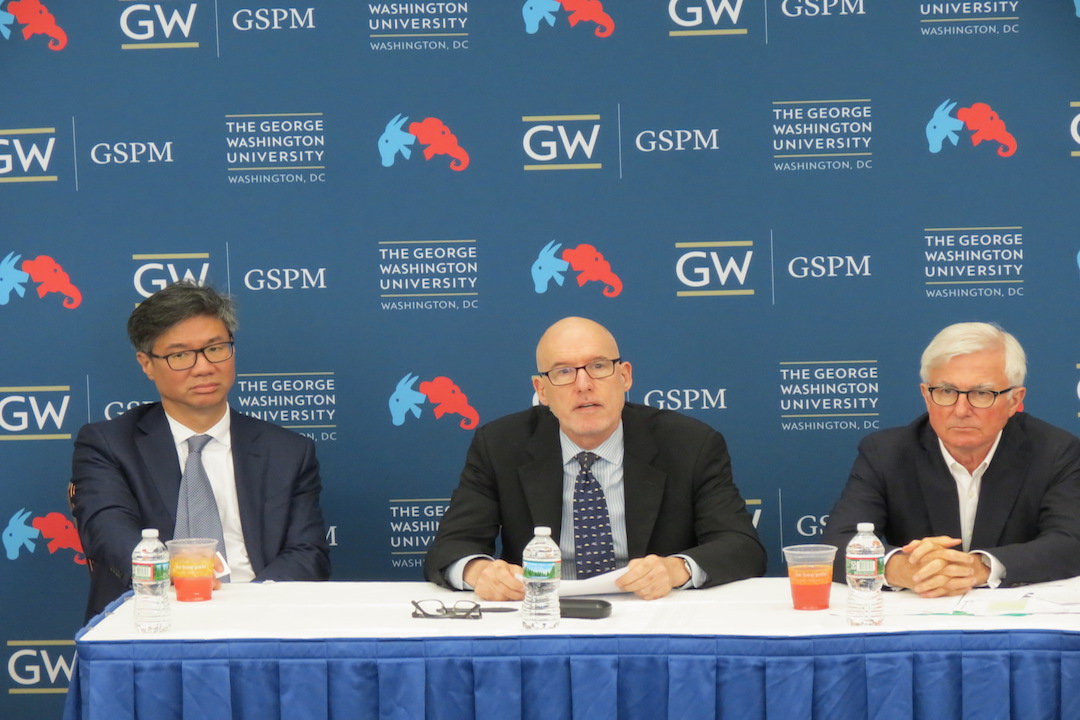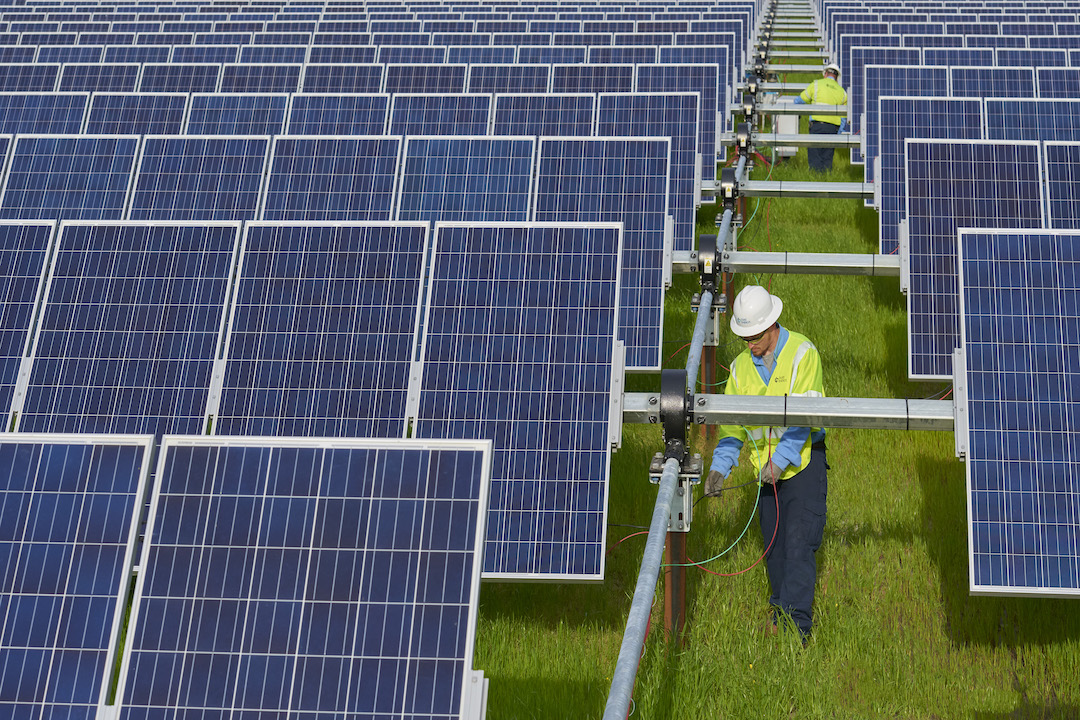 By Kristen Mitchell
By Kristen Mitchell
Sustainable technology expert John Helveston, an assistant professor in the School of Engineering and Applied Science’s Department of Engineering Management and Systems Engineering, published a commentary in Science that advocates for greater collaboration with China in order to curb the impacts of global warming.
China has emerged as a global leader in the production of low carbon energy technologies (LCETs), such as solar panels, wind turbines, and lithium-ion batteries. Due to multiple decades of investment and government support for manufacturing research and development, China is now able to produce LCETs at a high volume and low cost that cannot currently be matched by any other country in the world, Dr. Helveston said. Collaboration with China will be critical to meeting the goals of the Paris Agreement, which includes achieving net zero greenhouse emissions by 2050 and slowing the rate of rising temperatures.
Dr. Helveston, who co-authored the commentary with his colleague Jonas Nahm, an assistant professor at the Johns Hopkins University School of Advanced International Studies, spoke to GW Today about China’s LCET production and what more can be done to support international collaboration, even as President Donald Trump has officially initiated the United States’ withdrawal from the Paris Agreement.
Q: Why is the mass production of LCETs such an important component of meeting the Paris Agreement goals?
A: To meet the Paris Agreement goals, the world needs to deploy 300 gigawatts of renewable energy capacity every year from 2018 to 2030. Despite record-breaking growth in solar and wind power in recent years, the world only added 177 gigawatts of capacity in 2018. So we’re already pretty behind schedule, which means we will need to deploy even more in the coming years. To do so, somebody is going to have to make a lot of solar panels, wind turbines and batteries. Scaling up manufacturing can additionally lead to further cost reductions in these technologies, which can help make them even more competitive with traditional fossil fuel power plants.
Q: Your research found that Chinese manufacturers have centered their research and development efforts on production improvements rather than developing new products. Why is that significant?
A: There is a substantial difference between inventing a technology or product and successfully commercializing it, and the two processes require different resources and skills. While inventing new technologies is exploratory in nature, commercializing products involves discovering new ways to use or produce technologies such that they can be made faster, better, stronger, cheaper, etc. For many products, this involves making large investments in manufacturing facilities, machines and tools, as well as training a labor force to operate and optimize the production lines to keep costs low and quality high.
China’s multi-decade focus on these types of investments has made many Chinese manufacturers in multiple industries very competitive at mass producing goods, which has also made it difficult for non-Chinese manufacturers to compete. While China’s government does support their domestic manufacturing economy through generous loans, tax breaks and subsidies, these factors alone are not what makes Chinese manufacturers so competitive today, but rather the tacit production knowledge and abilities to re-engineer products and technologies for mass production.
Q: How does the ongoing trade war between the United States and China make collaboration on sustainable energy development more challenging?
A: The Trump administration’s trade war with China has had a substantially negative impact on sustainable energy development. For example, imported solar panels from China were one of the first products to be subject to tariffs, which resulted in a steep decline in the growth of solar power deployment in the United States. Prior to the tariffs, solar was the fastest-growing sector of all new energy projects in the country and also the largest employer across the entire power-generation sector, largely in solar panel installations. Growth has now flat-lined, and American jobs in the sector have declined. Since the United States and China account for 40 percent of global energy consumption, this has a global impact.
The tariffs also make it even more difficult for American innovators that are currently developing the next generation of renewable energy technologies to commercialize their inventions. Prior to the tariffs, American innovators could license their technologies to mass manufacturers in China, but now they are forced to find other partners who may not possess the same manufacturing prowess. While this may benefit U.S. manufacturers, it does not necessarily enable costs to come down as fast as they could, which is what the world needs to meet the Paris Agreement targets.
Q: You point to intellectual property theft concerns as a barrier to greater global collaboration on LCETs. What can governments do to address this issue?
A: Governments have a crucial role to play in addressing intellectual property (IP) theft. They can help build and support networks of innovators across national borders through collaborative programs, such as the U.S.-China Clean Energy Research Center, which was established by former U.S. Energy Secretary Steven Chu in 2009. These types of initiatives can encourage collaboration in focal areas and help alleviate IP concerns by agreeing upon a technology management plan prior to launching any collaborations. Governments can also negotiate with other countries to form agreements that set reciprocal rules on IP protections and enforcement.
Q: What could the United States do domestically to make the biggest impact in this space over the next five years?
A: One thing the American innovation ecosystem does extremely well is produce new, cutting-edge technologies. Achieving that outcome requires investment in advanced research and development, so increasing federal budgets for R&D could make a big difference.
In addition, the United States government could support domestic innovators by providing support for more demonstration-scale projects that can help move ideas out of the lab and into industrial settings, which could help identify some of the further downstream commercialization challenges earlier on and possibly accelerate a technology’s adoption into a competitive market.
Q: If governments and industry do not immediately start working to increase collaboration on LCET production, what will be the resulting consequences?
A: As we wrote in our commentary, “collaboration was central to the emergence of contemporary renewable energy technologies, and collaboration will be equally important in rapid decarbonization through deployment of LCETs.” If governments do not prioritize the deployment of LCETs, the world won’t meet the Paris Agreement goals, and global average temperatures will continue to increase beyond the 2 degrees Celsius target.




